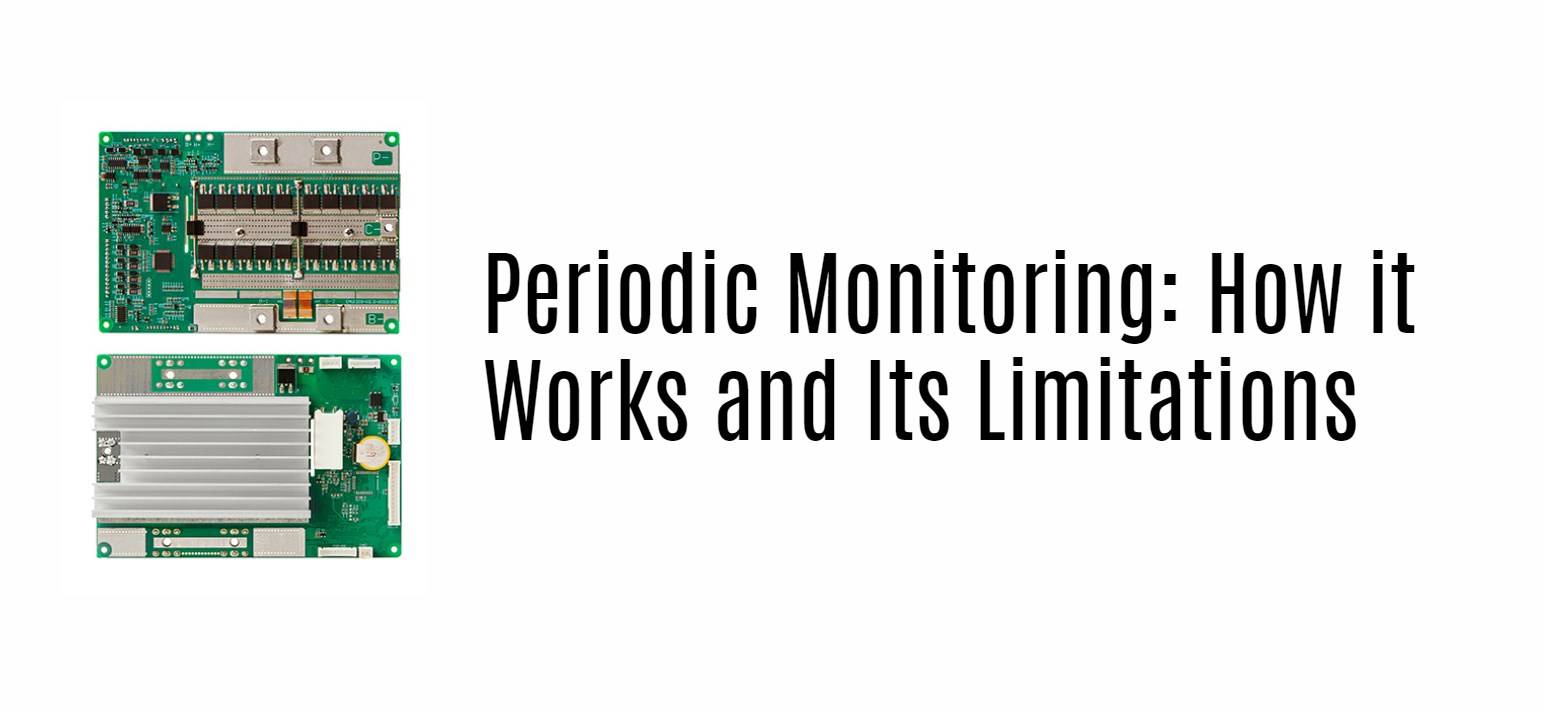Real-time monitoring versus periodic monitoring: Discover the differences and uncover the secrets to optimizing battery performance and maximizing efficiency in Battery Management Systems (BMS). Whether you’re a tech enthusiast or seeking ways to enhance battery life, join us on this electrifying journey as we explore the intricacies of monitoring approaches.
The Importance of Monitoring Battery Performance
Battery performance monitoring is crucial for ensuring the longevity and efficiency of your energy storage system. By keeping a close eye on how your batteries are functioning, you can detect any issues early on and prevent costly damages. Monitoring helps you track key metrics like voltage levels, temperature, and state of charge to optimize performance.
Regular monitoring allows you to identify patterns in battery behavior over time, giving insights into usage patterns and potential areas for improvement. This proactive approach can help extend the lifespan of your batteries and maximize their performance output.
With advancements in technology, real-time monitoring systems offer instantaneous data updates and alerts for immediate action. This level of oversight enables swift responses to fluctuations or anomalies in battery health, ultimately enhancing overall system reliability.
In today’s fast-paced world where energy demands are constantly evolving, staying ahead with comprehensive battery performance monitoring is key to maintaining a sustainable and efficient power supply.
Real-time Monitoring: How it Works and Its Benefits
Real-time monitoring is a game-changer when it comes to optimizing battery performance. It involves continuously tracking and analyzing data from the battery in real-time, providing instant insights into its health and usage patterns.
By monitoring the battery’s parameters such as voltage, temperature, and current flow in real-time, any anomalies or issues can be detected immediately. This proactive approach allows for timely interventions to prevent potential failures or damage to the battery.
The benefits of real-time monitoring are vast. It enables better decision-making based on accurate data, increases overall efficiency by identifying optimization opportunities promptly, and extends the lifespan of the battery through proactive maintenance strategies.
In essence, real-time monitoring transforms how we manage batteries by shifting from reactive to proactive practices. It empowers users with actionable information that can significantly impact performance and reliability.
Periodic Monitoring: How it Works and Its Limitations
Periodic monitoring involves checking the battery performance at set intervals rather than continuously. This method typically includes manual inspections or scheduled automated tests to assess the health of the battery system. While periodic monitoring can provide valuable insights into battery performance, it has its limitations.
One major limitation is that issues with the battery may go undetected between monitoring periods, leading to potential problems being overlooked until the next check-up. This could result in unexpected downtime or decreased efficiency if problems are not identified and addressed promptly.
Additionally, periodic monitoring may not capture sudden changes in battery performance that require immediate attention. Without real-time data, it becomes challenging to react swiftly to critical issues that could impact overall system operation.
To overcome these limitations, integrating real-time monitoring capabilities within a BMS can offer continuous insights into battery performance and enable proactive maintenance strategies for optimal efficiency and longevity.
The Role of BMS in Optimizing Battery Performance
Battery Management Systems (BMS) play a crucial role in optimizing battery performance. By constantly monitoring key parameters such as voltage, current, and temperature, BMS ensures that the battery operates within safe limits. This real-time data allows for timely adjustments to charging and discharging processes, prolonging the battery’s lifespan.
Moreover, BMS helps prevent overcharging or deep discharging which can damage the battery cells. It also enables balancing of individual cell voltages to maintain uniformity across the battery pack. This balance is essential for maximizing energy storage and efficiency.
In addition, BMS provides alerts and warnings in case of any abnormalities or faults detected within the system. This early detection capability allows for prompt troubleshooting and preventive maintenance actions to be taken.
BMS acts as a guardian for batteries, ensuring optimal performance while safeguarding against potential risks or failures.
Factors to Consider When Choosing Between Real-time and Periodic Monitoring
When deciding between real-time and periodic monitoring for your battery management system (BMS), there are several key factors to consider. First, assess the criticality of your battery application – high-risk scenarios may require real-time monitoring for immediate intervention.
Next, evaluate the cost implications of each option. Real-time monitoring systems typically come with a higher price tag due to their continuous data collection capabilities. On the other hand, periodic monitoring may be more budget-friendly but could lead to missed issues between scheduled checks.
Consider the complexity of your battery system as well. Real-time monitoring is ideal for intricate setups that demand constant oversight, while simpler systems may function effectively with periodic checks.
Factor in your resource availability and expertise. Real-time monitoring requires consistent attention and technical knowledge for interpreting live data streams, whereas periodic monitoring allows for intermittent analysis at predetermined intervals.
Best Practices for Using BMS in Battery Performance Optimization
When it comes to optimizing battery performance using Battery Management Systems (BMS), there are several best practices to keep in mind. Ensure that your BMS is properly configured and calibrated according to the specific requirements of your battery system. This will help maximize the accuracy of the monitoring data.
Regularly conduct maintenance checks on your BMS to identify any potential issues or malfunctions early on. Proactive monitoring can prevent larger problems down the line and extend the lifespan of your batteries. Additionally, make sure that all personnel involved in managing the BMS are adequately trained and familiar with its functionalities.
Utilize the data collected by the BMS effectively by analyzing trends and patterns to make informed decisions about battery usage and charging cycles. Implementing a comprehensive strategy based on this analysis can lead to significant improvements in overall battery performance and longevity.

Case Studies: Successful Implementation of BMS for Real-time and
Case Studies: Successful Implementation of BMS for Real-time and
These case studies showcase the real impact that Battery Management Systems (BMS) can have on optimizing battery performance. By utilizing real-time monitoring capabilities, companies have been able to proactively address issues as they arise, leading to improved efficiency and longevity of their battery systems. On the other hand, periodic monitoring may still be suitable for certain applications where constant monitoring is not necessary.
In the end, choosing between real-time and periodic monitoring depends on various factors such as budget constraints, criticality of the application, and desired level of control. Regardless of the approach taken, implementing a robust BMS is crucial in ensuring optimal battery performance.
By understanding how BMS works and considering all relevant factors when choosing a monitoring strategy, businesses can leverage this technology to enhance their operations and drive long-term success in an increasingly electrified world.
















